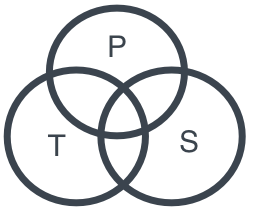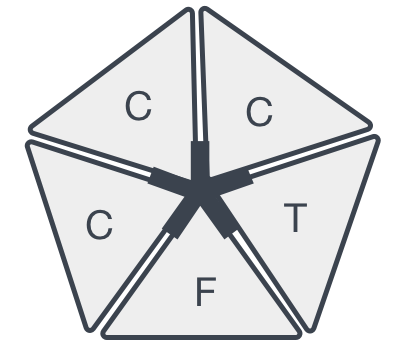Product Opportunity Discovery
Opportunity discovery is an often misunderstood concept – an enigma even without our own industry. Without a ubiquitous definition, Product professionals seem to be a sense that we need to figure out what to build and we eventually end up with a roadmap, but I rarely see a clear articulation of exactly what’s required or how we get from strategy to planning. To that end, I’ll explain my methodology in this article:
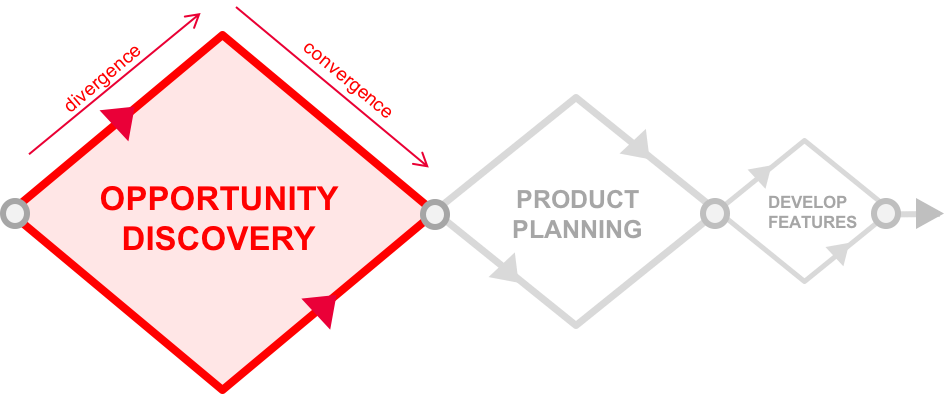
First, I’ve defined the 3 Diamond Product Process, which puts this into context, relative to planning and feature development. Opportunity discovery is the set of activities that start with the product charter (implicitly or explicitly), involves some divergent exploration and culminates in a convergent definition of a product vision. The Product Vision is our ultimate statement of the opportunity and how we envision our strategic solution. This starts with ‘divergent’ research activities to understand the context, and culminates in defining and selecting a vision that we believe will succeed. That is the journey we’ll take in this article.
I once read that 75% of strategy is research and I couldn’t agree more. You could write a product vision statement in 5 minutes but it won’t be worth the paper it is written on, if you haven’t taken the time to thoroughly understand internal capabilities, fundamental market dynamics and developed a competitive market position that is responsive to the competitive landscape. The work of understanding the market and how to respond to it, what product strategy is all about it – it sets the trajectory for your product and the planning and product development activities that follow.
3 C’s of Market Research
In the Opportunity Heuristics model, I introduced 5 themes for market opportunity, two of which are internal (Team & Finance) and the other three are external facing market dynamics –Customers, Competitors, and Capabilities. In the above diagram, I use a metaphor of launching a rocket toward a goal, to describe how these dynamics interoperate and affect our vision. Consider that if we’re trying to launch a rocket to hit a specific target, we must account for the direction, angle, and strength of thrust that are appropriate to hit our target and to overcome contextual dynamics such as distance, wind, and gravity. If we are blind to any of these dynamics we will not hit our mark. Product-Market fit is similar – we must consider the interplay of these market dynamics, to develop an adaptive and appropriate strategy.
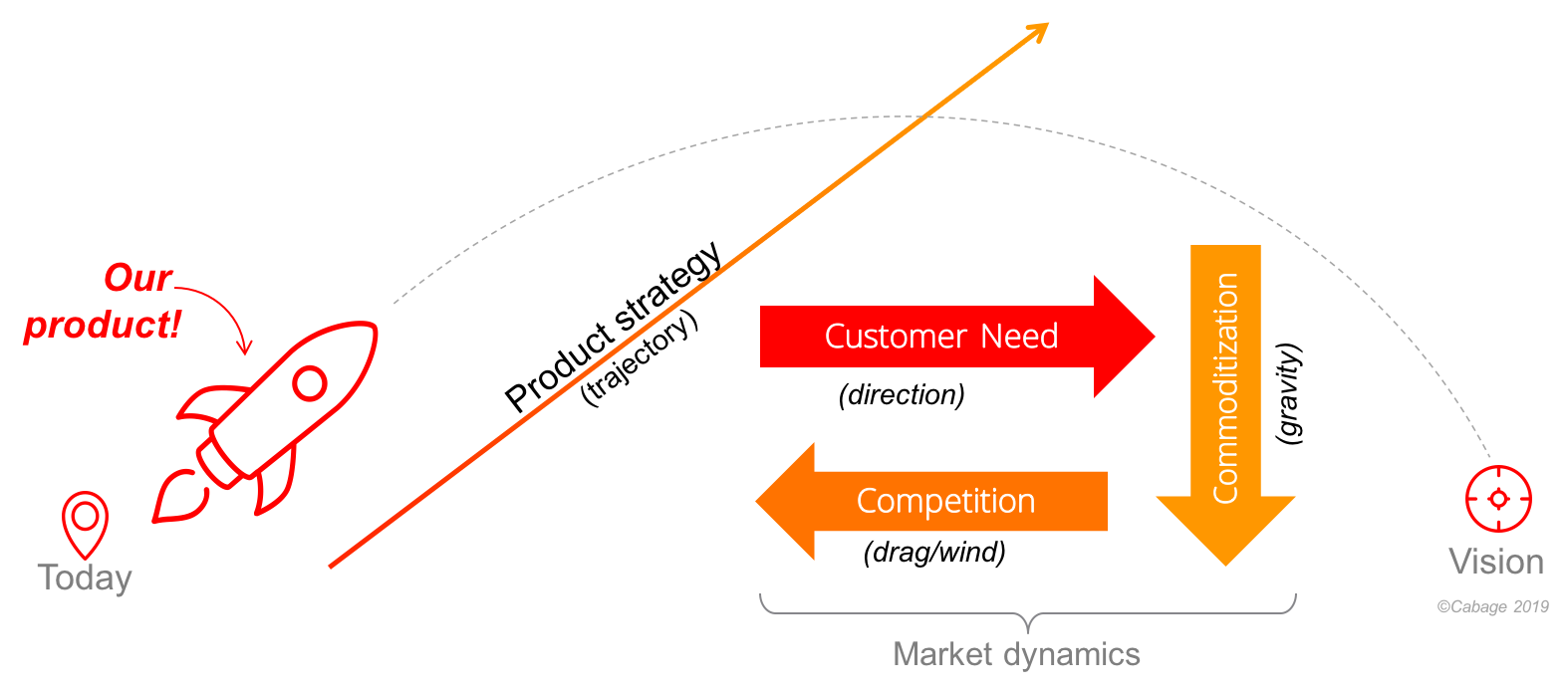
With the higher-level concepts in place, I can now describe each of those 3 Cs in more detail and demonstrate how I might approach the exploration of each of them and then how I might tie them all back together into a cohesive product strategy. To do this, I’m going to assume that we work for a fictitious real estate company and we’ve been chartered with developing a lead generation solution for the real estate industry. I’ll also assume Business has provided a clear charter to us that describes the business outcome we’re being tasks to achieve.
1. Customers
The first step in evaluating the market dynamics that will form a product vision, is to understand the customer – and there are two parts to this: The first is market segmentation to identify the right target customers you should build this solution for (going wide). Once the target segments have been identified, the second part is to build an empathetic understanding of what they need and desire, and why (going deep).
Going Wide – Our starting point with the Product Charter was to build a lead generation solution for the real estate industry. Based on that, we can begin researching and brainstorming the different user groups that might benefit from a lead generation solution in real estate. For simplicity, I’ll skip over the details of that research and just assume we already know the segments to be the following:
- Real Estate Broker
- Real Estate Agent
- Independent Broker/Agent
- Property Manager
- Corporate Real Estate
The next step is to start identifying overlapping use cases that could be served with a single generalized solution – what’s the right solution that would be meaningful to the largest possible audience? To begin answering this question, I really like using the Jobs to be Done framework (JTBD).
The idea is simple – customers ‘hire’ a product to do a job for them. As Theodore Levitt once said, “customers want ¼ inch holes, not ¼ drills”. To that end, the JTBD framework provides a simple solution to cut through the ambiguous nuance and get to the heart of what really matters for each of these customer segments.
Alan Clement further proposed writing job stories, similar to how we do with User Stories, but emphasizing the scenario of the job. It is written in the following format (speaking on behalf of the market segment): “when {context} I want {solution} so I can {reason}”. So let’s apply that to each of our 5 real estate market segments, to see just how differently they think about a lead generation solution:
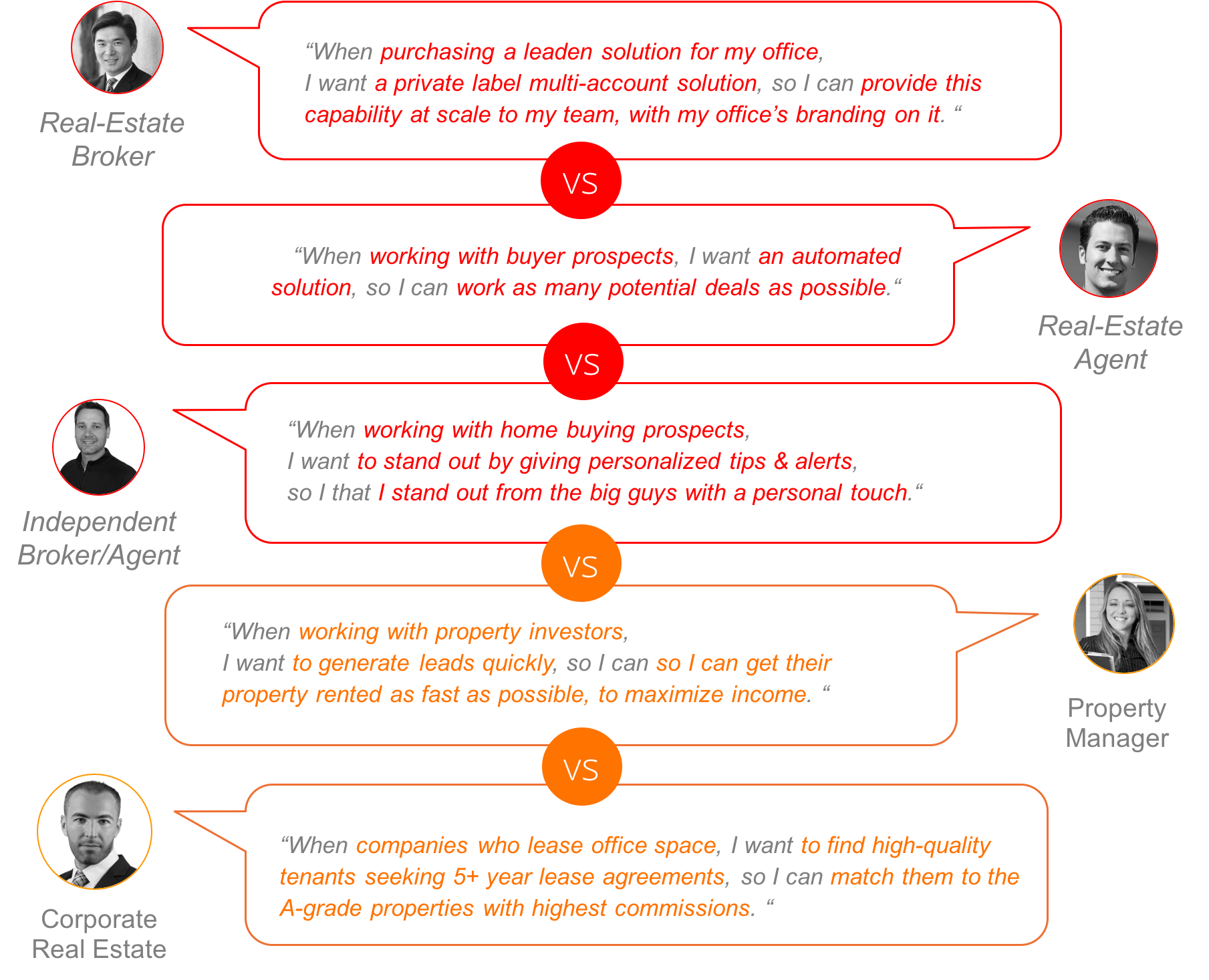
A broad theme that stands out from this analysis is that the first three segments (shown in red) are generally interested in home buyer leads. Already I can see that those three needs are for the same thing, albeit for different reasons. The conceptual needs of the Property Manager and Corporate Real Estate professionals are similar but seem sufficiently different that we can dismiss them and focus on our core segments (in red).
Next, I’m interested to understand just how big our addressable market is, and begin to project just how big this opportunity might be. The TAM/SAM/SOM framework is useful for this purpose. We can do some analysis to identify how large the total real estate market is, how large our Serviceable Addressable Market (SAM) might be if we target these 3 market segments, and then project a likely Share of Market we’re likely to capture. From this we can see roughly how much opportunity we might be able to capture, to validate our focus, or see if we need to step back to look for another generalizable theme that makes more sense. For now, let’s assume the segments look appropriate and so we’ll proceed to the next step.
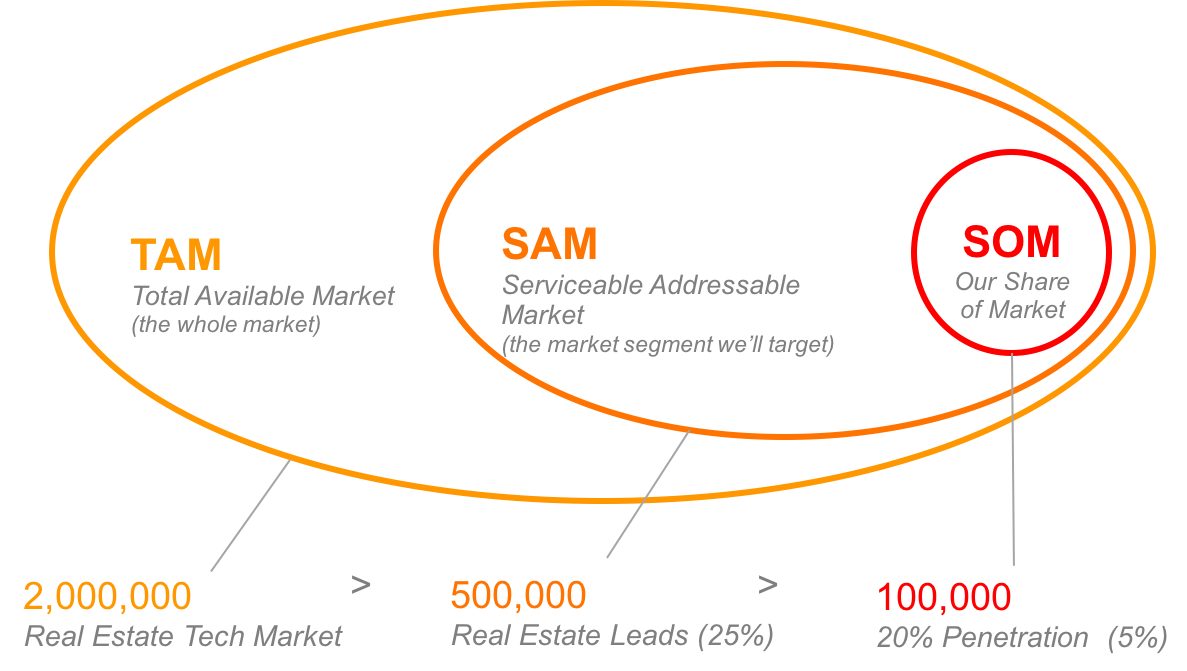
Going Deep – Assuming we feel good about the market segments we’ve selected, the next step is to go deep, to understand those customers, their needs, desires, and context, and motivations. Personas have become a popular way of capturing this. The idea is to create a fictitious person that exemplifies that segment and then describes the various attributes of that person. The idea is this builds empathy and to validate ideas and opportunities against something more tangible. There are different types of personas though and some such as the design person goes far deeper into describing the personality and emotional attributes of those groups. I personally find the “proto” persona to be sufficient for this purpose, which is a much more lightweight representation of the group.

At this point, we have a directional understanding of who we’re serving with this product and what their common need is that we’ll solve for. There is, of course, more user research that can be done once we’re ready to validate the opportunity with those customers (interviews), and are ready to go into solution and feature development (customer journey mapping, etc) – we’ll pause here for now though, to first understand the other market dynamics and hypothesize a few opportunities before continuing.
2. Competitors
Next, we need to understand our competitors. It isn’t enough to just think about who we want to solve for – we also must consider whether the problem has been sufficiently addressed already by the market, or if there are significant competitors that we need to work around.
I first like to do market landscape analysis. Particularly in a complex market ecosystem where there can be many fragmented solution types that sit between the buyer an seller. Lumascape is a company that has created a lot of these diagrams for various industries and I came across the following Lumascape-inspired diagram from a company called AmiTree, which shows all the different layers in the ecosystem. This makes it very easy to see which market fragment our solution might fit into and thus who the key competitors are. In this example, there is a group called “Agent Lead Generation” that maps to our Leadgen solution, and so we can see companies like TopProducer, Zurple, and Boomtown would be competitors. A quick search on a market research platform like SimilarWeb may show us a half dozen more as well, using these seeds.
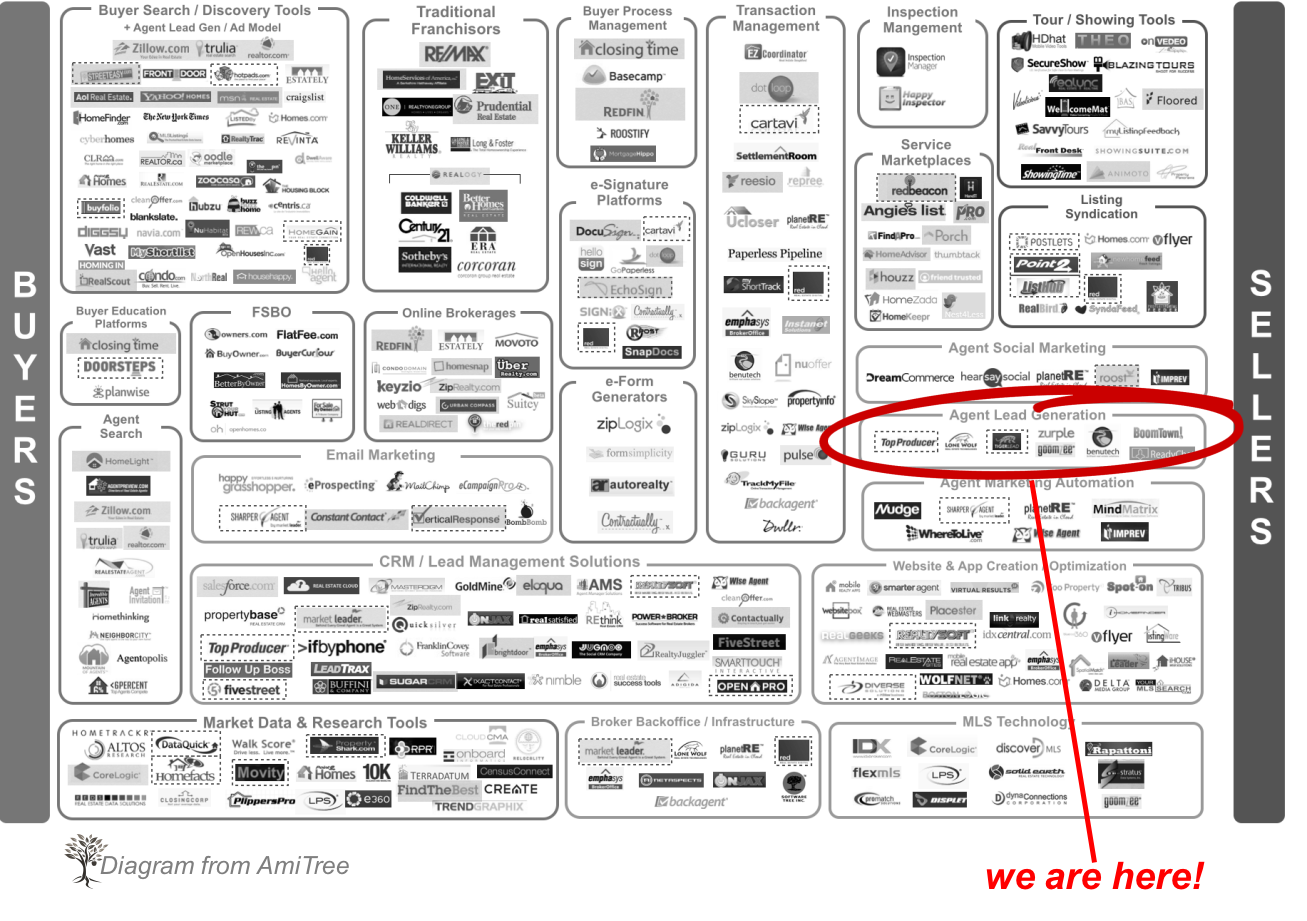
Once we know who the players are, its time to start quantifying their presence, to determine the ones that really matter. There are any number of signals you could look at here but the ones I generally prefer are: the age of the company, number of employees, and market share, which are lagging indicators of how established and entrenched a company is. Funding and solution offering meanwhile can be early indicators for future prominence (solution quality is subjective but can be objectified by using a framework to classify and rate the strength of key features). Other signals sometimes worth considering are prominence on marketing channels or entrenchment with key customers. Whichever set of criteria you choose to evaluate, the key is to get them all on one page and then stratify the strength of those competitors relative to one another.
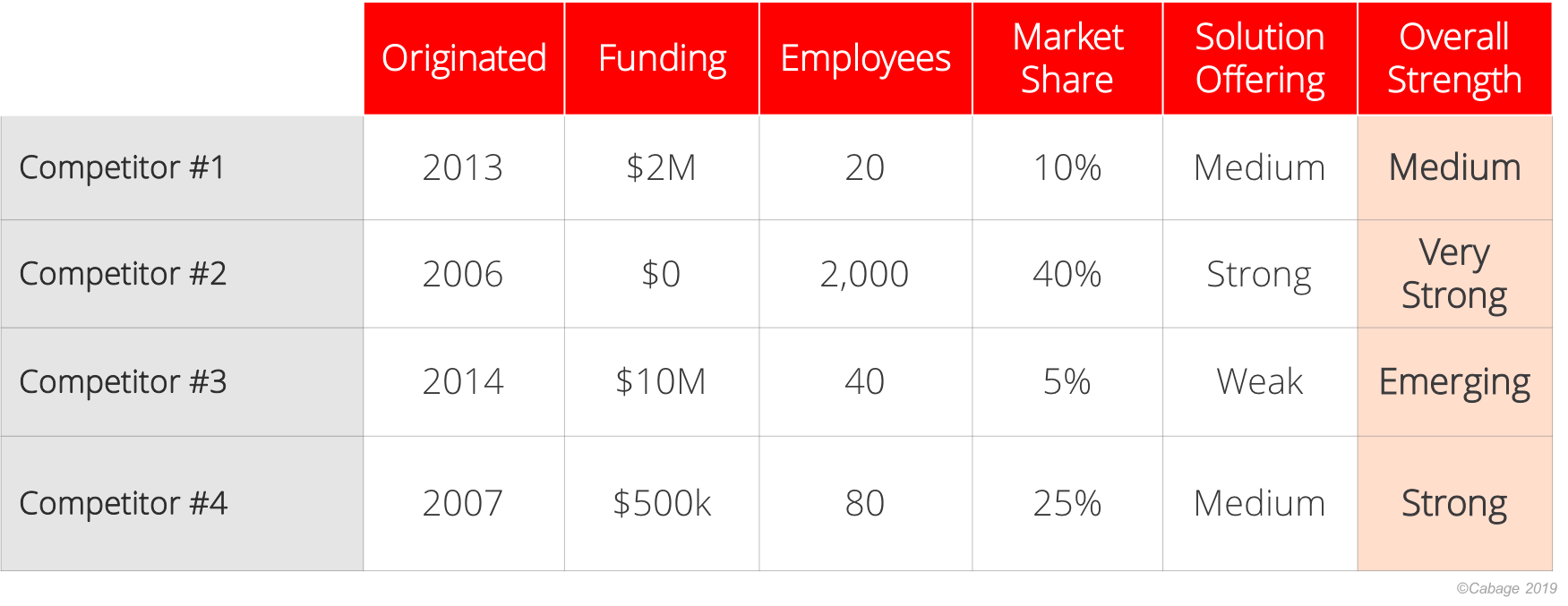
The Gartner Magic Quadrant is a really nice tool for visualizing the importance of these competitors, making it easy to see who you need to be paying the most attention to – both in terms of competitive differentiation as well as what seems to be work.
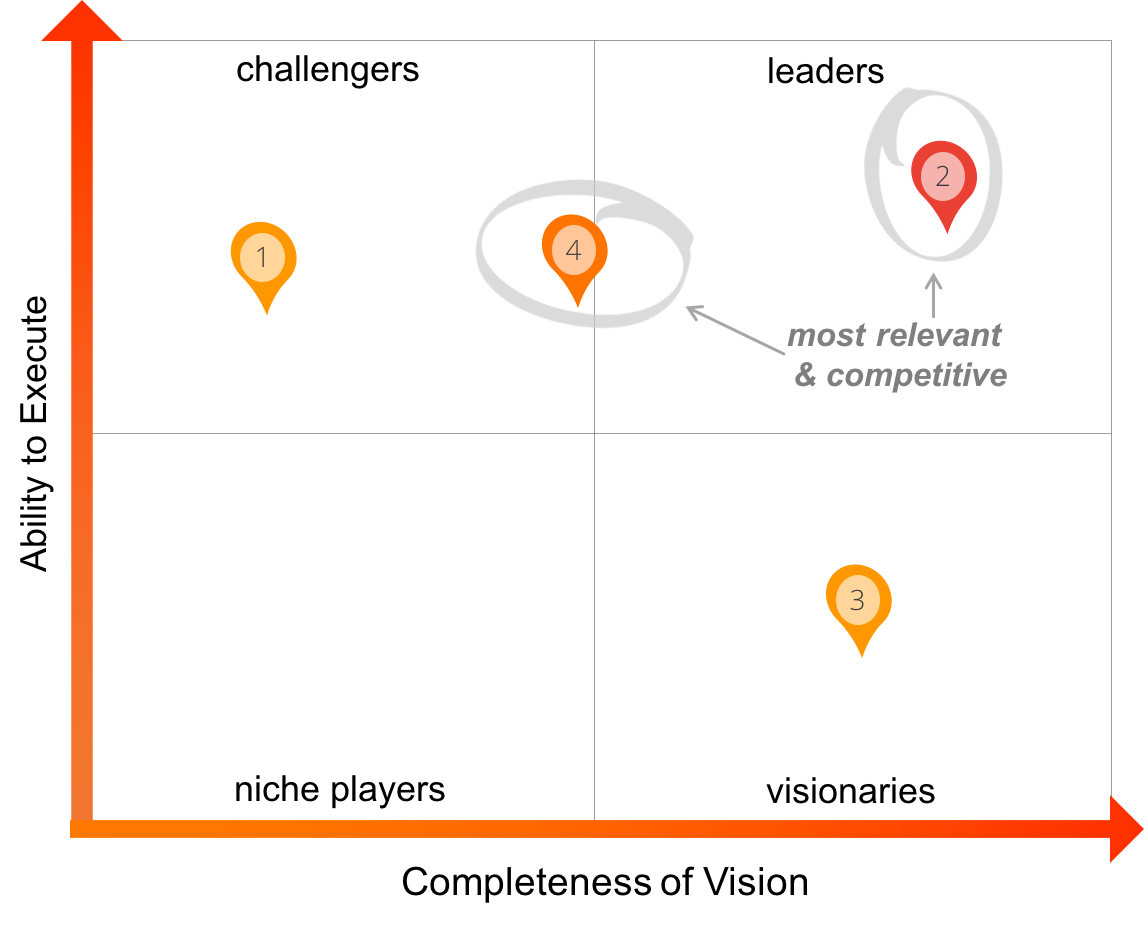
3. Capabilities
The last of the 3C’s is capability. What I mean by this is that we have technologies and processes that make it possible to bring efficiencies of scale to bear, to address a problem. These capabilities can be a powerful amplifier of the value that you create and can sometimes be a disruptive force that allows you to transcend competition. It is important to keep in mind however, that capabilities become a commodity over time, and are less strategically meaningful once they have reached ubiquity.
As an example of this point, consider what it means to run a real estate website that publishes available homes in your area. Before the year 2000, it may have as much as $2,000,000 to build that out, primarily because of the high cost of building out a cost storage facility, running fiber to that facilitate, and buying expensive dedicated hardware. That was soon a commodity though and it dramatically reduced the cost of running an online business. By 2005, open source CMS systems like WordPress were free and that type of custom development was no longer necessary. By 2008, the data feeds for obtaining the MLS data have become standardized and streamlined via IDX/RETS and were readily available for a local market at a nominal fee. And by 2013, even website design had become a commodity with the high-quality design being available on sites like ThemeForest for as low as $20 a design. And so now the cost of creating such a real estate site could be as low as $2000 to put together, 1000 times less than the cost from 13 yrs prior.
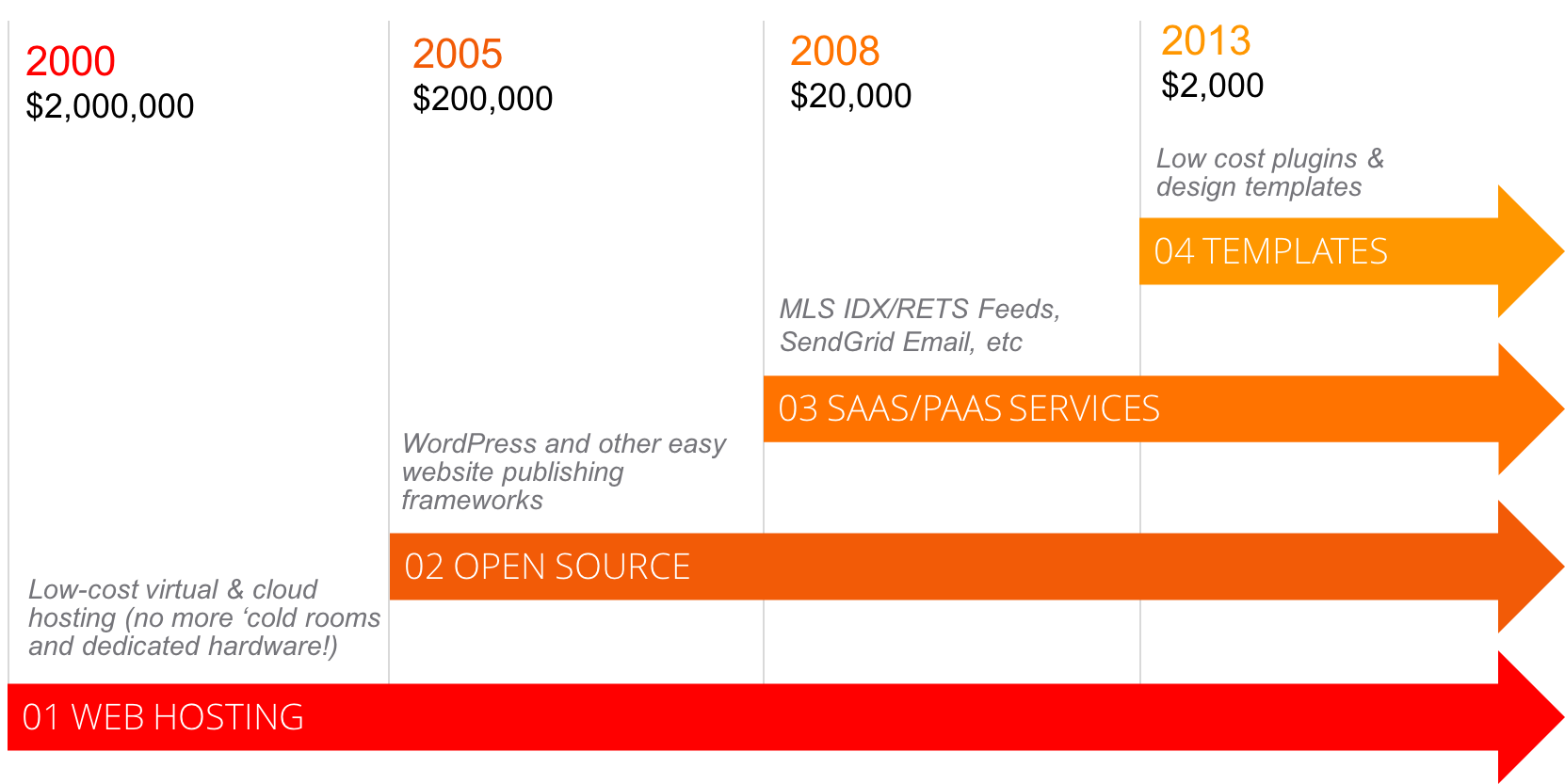
The Innovation Adoption Curve is a really powerful model for understanding the lifecycle of a new capability. In the beginning, there is a period where demand exceeds supply but in the second half of that innovation lifecycle, supply begins to exceed demand, leading to eventual commoditization. Geoffrey Moore describes a chasm as the ideal entry point, after sufficient validation and adoption has occurred to mitigate risk, but early enough to provide an opportunity to scale the business, before reaching that inversion of supply and demand.
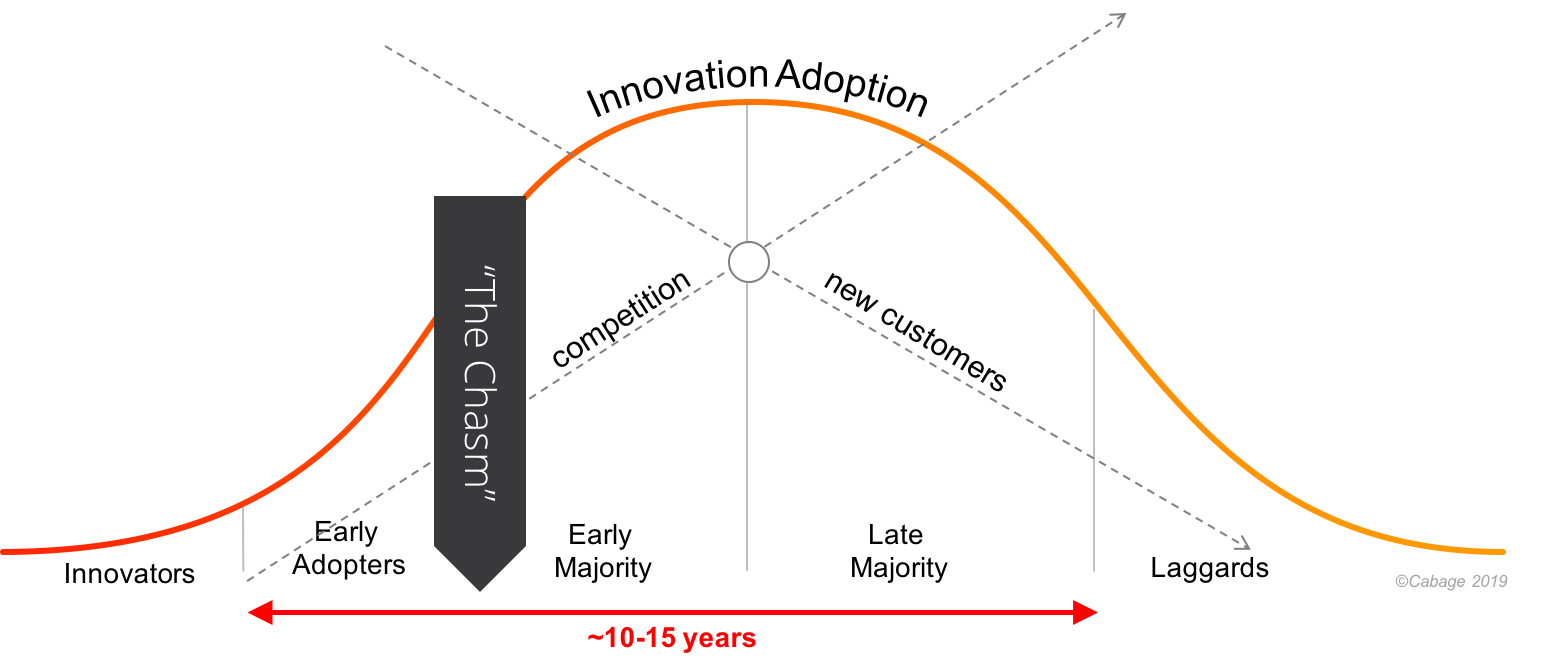
Innovation waves often come in sets, however, so while it may be late to catch one wave, timing may be before to catch the next one. With timing on your side, it is like having the wind at your back, so this is something to be thinking about when looking at capability strategically.
4. Defining Opportunity Hypothesis
So far I’ve described the divergent activities of market research, meaning we weren’t looking to define anything yet – rather, we were collecting all the information we can to build context. Now that we’ve done that across the three market dynamics (the 3C’s), its time to begin identifying possible opportunities to address those unmet (or underserved) needs.
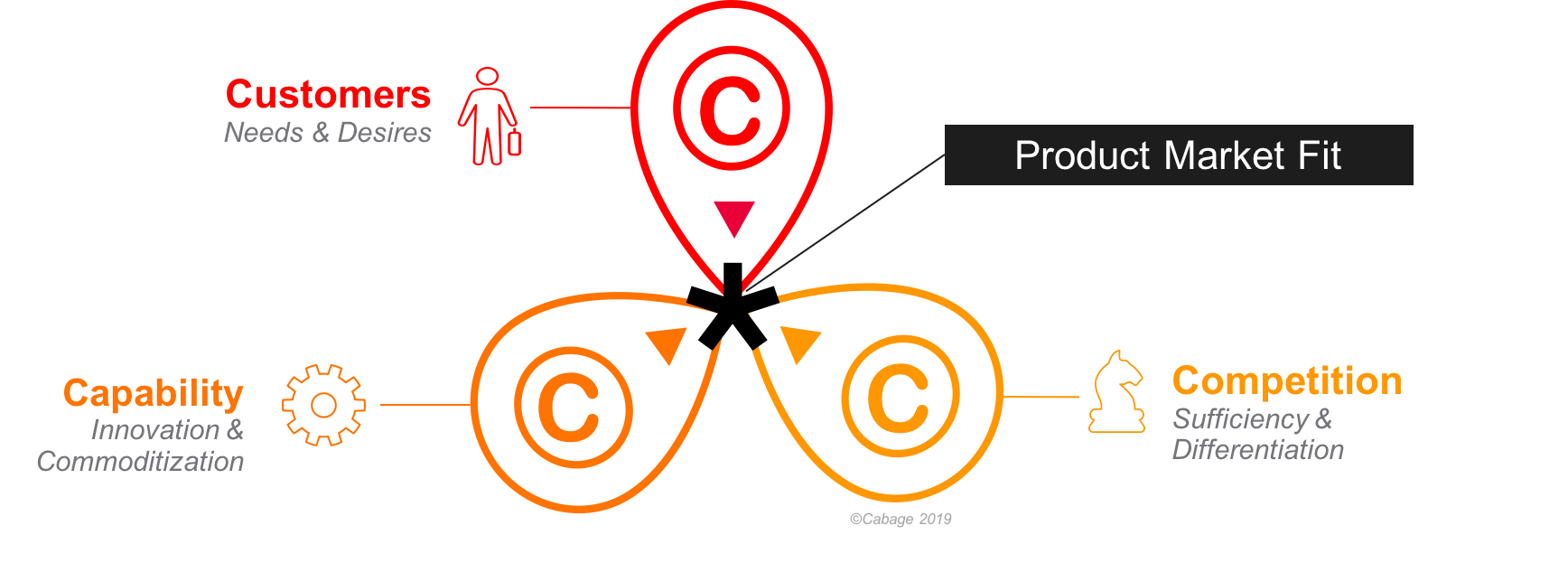
Simply addressing the customer need isn’t always enough – it is important to consider the competitive dynamic and your tools for creating a differentiated market position to maximize odds of success. There are a number of competitive strategy frameworks that can be useful in thinking through this strategy – my two favorites are Generic Competitive Strategies (Porter) and the Innovation Ambition Matrix (Ansoff). I’ve also created one specifically for product differentiation call the Value Creation Plane. There are others as well but stepping back from the specifics, there are really four approaches one can take to finding a viable market position
- Category Disruption – In an established category, demand is already established and one or two incumbents control the majority of the market for this solution. For categories that are recently conquered this can be a challenging dynamic and another strategy may be advisable. Mature markets that have been established for may years however, can often be ripe for disruption, particularly when the incumbents have not been investing in their future. Its all-too-common that established businesses fall into a “value capture” footing and stop investing to create new value, the world ends up passing them by, and for the entrepreneur who looks at this with fresh eyes, its often very easy to imagine how a new technology or process could be used to get an edge by creating greater value. Amazon did this with e-commerce when the Internet was taking off, which created a massive opportunity to disrupt traditional retail.
- Differentiated Value – When a category is not easily disrupted, create a new one. Blue Ocean Strategy, one of my favorite books, describes how it can be easier to find a market position by creating a new category than competing in an existing one. Often times this is as easy as looking at what’s working in one market and applying it to something else (“Uber for X”). This worked brilliantly for AirBnB.
- Value Extension – One of my favorite strategies is what Starbucks did with coffee – they took the ultimate commodity with massive established demand, which had been neglected for decades and found a way to create a complex of additional value around it, such as a nice place to hang out, free wifi for the person who needs a temporary office. They even created coffee beverages that feel more like desert and so the prices they charge are disproportionate to what a commodity cup of coffee would sell for elsewhere. The core of the business is coffee, but they’ve built an empire by building value around coffee, rather than trying to re-invent it.
- Segmented Audience – The last is to simply take a solution from an established market and customize the solution for a specific niche audience. By doing so, you can create additional value for them that the more existing solutions may not already be addressing. Dating sites such as JDate are an easy example of this. This strategy can be useful for differentiating in a recently established niche but are ultimately vulnerable to differentiation and value extension strategies longer term.
5. Defining the Vision
By taking the 3C’s research and applying it to one of these strategies, we have all of the pieces needed to complete a vision statement. To complete this exercise, I’m going to stick with the real estate example – we identified 3 customer segments who share a need or buyer agent lead generation and nurturing. We recognize there are several competitors already but they’re not terribly innovative. During our capability research we identified Machine Learning (ML) as a disruptive new capability that will enhance our ability to identify properties and surface better recommendations. ML also means the ability to interact with customers via voice commands, creating fun and differentiated experiences for customers. Through optimized recommendations and new user experiences, we’re able to offer a fresh take on lead generation by using a category disruption strategy. Using the Vision Definition template, we might define a vision as follows:

The work is not done yet of course – the vision is but a hypothesis at this stage and needs to be validated with the market and aligned internally with your team and resources. Setting that aside, hopefully, this demonstrates the process of opportunity discovery, starting with a Product Charter, researching the market, and ultimately converging on a strategic Product Vision, that subsequent planning and feature development activities are based upon.
